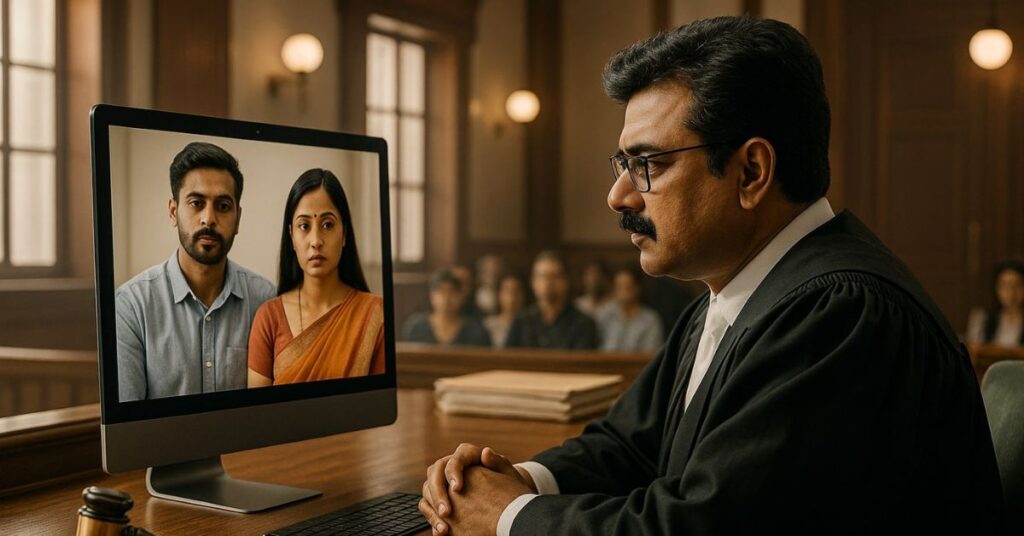In today’s digital era, even legal processes like mutual divorce are evolving with technology. Online Mutual Divorce is becoming an increasingly searched option in India, especially by NRI couples and those facing geographical or medical limitations. But what exactly does it mean, and how does it work in Indian family courts?
What is Online Mutual Divorce?
Online Mutual Divorce refers to a scenario where the court allows one or both parties to attend the divorce hearings through video conferencing or online mode. It’s not the same as filing and completing a divorce entirely on the internet. As per Indian law, mutual divorce still requires filing a physical petition and certain steps that need court approval.
When is Online Mutual Divorce Allowed?
Online hearings for mutual divorce are permitted by family courts in India under specific circumstances:
One or both spouses are residing abroad (NRI)
One spouse is medically unfit or unable to travel
There is a compelling logistical or humanitarian reason
Court discretion based on supporting documents and urgency
Note: Even if a couple applies for online hearings, the hon’ble judge has the final say.
What if the Family Court Declines Online Hearing?
In some cases, the Family Court may decline your request for an online hearing, despite a valid reason. In such a scenario, you have two options:
File an appeal in the High Court, seeking permission for online participation due to your special circumstances.
Nominate a family member or close relative as your authorized representative (through a properly notarized Power of Attorney) to appear on your behalf in court proceedings.
Step-by-Step Process for Online Mutual Divorce?
Apply Online: Fill your details in the Mutual Divorce Application Form.
Prepare the Mutual Divorce Petition: Clearly outline agreed terms like alimony, child custody, and property.
File the Petition in Court: This must be done physically through your advocate.
Request for Online Hearing: Submit an application citing the reason and attach supporting documents.
First Motion Hearing: If approved, both spouses appear online or physically via video conferencing.
Cooling-off Period: Typically 6 months (can be waived in some cases).
Second Motion Hearing: Final confirmation of divorce. Again, online presence is possible if permitted.
Divorce Decree Granted: The court passes the decree officially dissolving the marriage.
Documents Required
Address proof of husband and wife
Wedding invitation Card (If marriage was solemnized as per religious rites)
Certificate from religious institution (if marriage was solemnized at a religious place like Temple, Gurudwara, etc.)
Marriage Certificate (if marriage was registered at a Marriage Office)
Benefits of Online Mutual Divorce
Saves travel time and costs
Convenient for NRIs and long-distance couples
Reduces emotional stress of court visits
Speeds up the process if court cooperation is received
Is Online Mutual Divorce Fully Digital?
No. While hearings can be online, physical presence is still needed at key stages like:
Signing the petition
Submitting affidavits
Court filing
Some courts also require wet signatures, and a lawyer is typically needed to manage in-person tasks.
Conclusion
Online Mutual Divorce in India is a practical and growing option, especially for NRIs and couples unable to attend in person. However, it still involves court procedures and approvals. With the right legal support and documentation, the process can be smooth and efficient.




